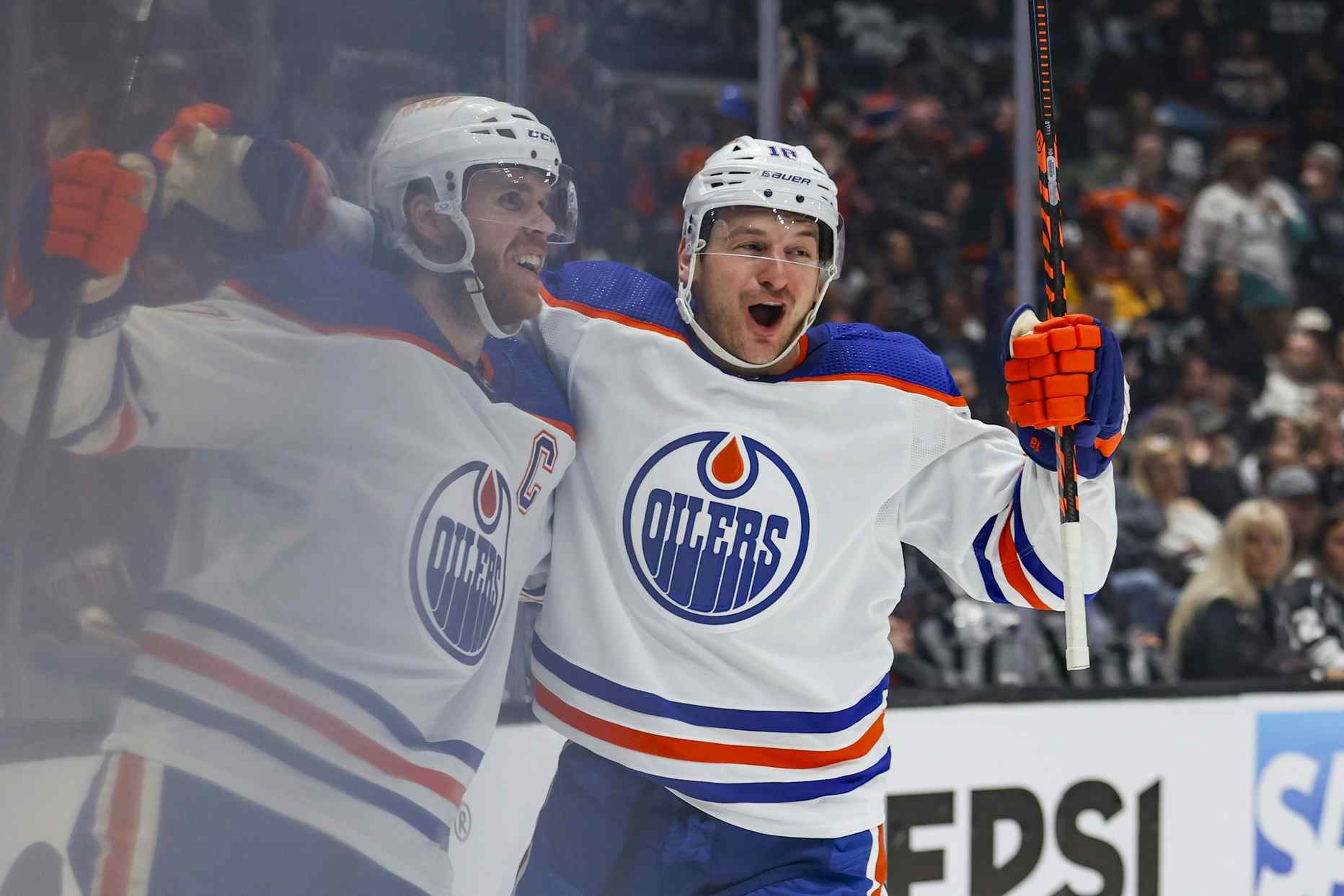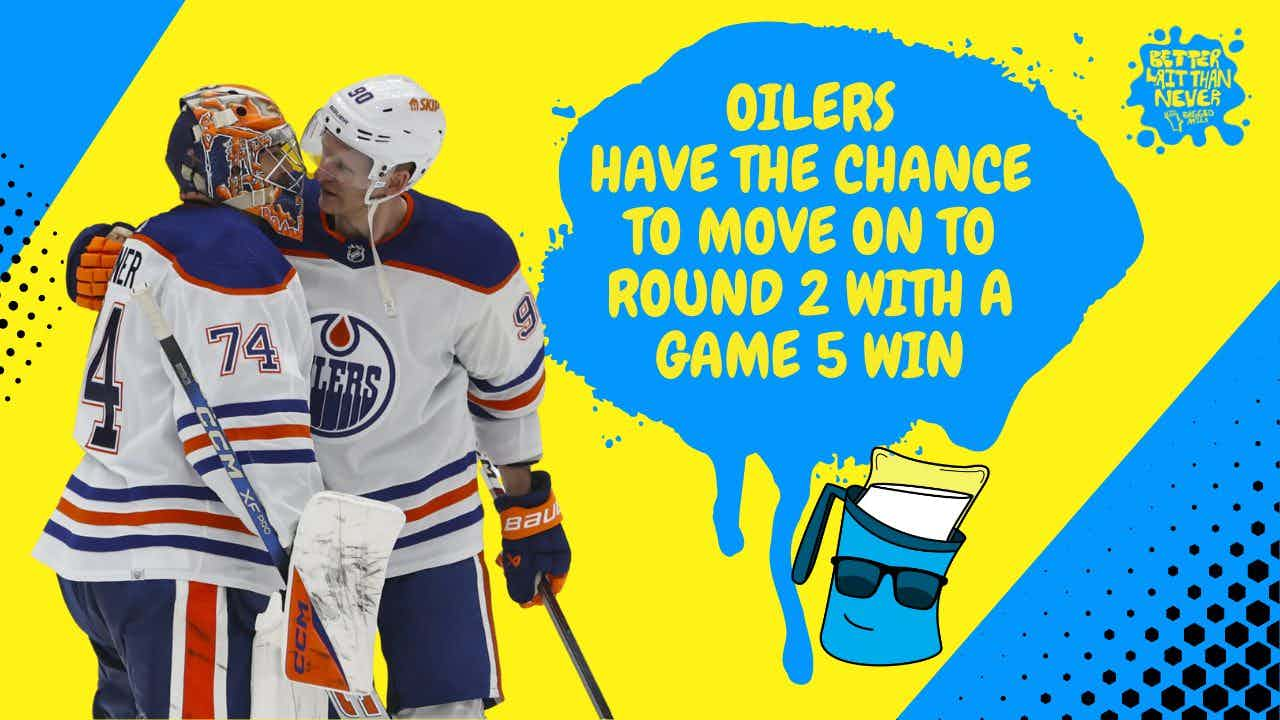Last Place Teams, Five Years Later: Tanking Works!

The promise is the same for every last place team in the modern history of the NHL: sure, they may stink now, but stick with them and those top draft picks will eventually turn the team into a contender. This is the current plan in Edmonton, after Steve Tambellini’s previous plan (Quinn + Khabibulin = competitive team) fell through.
Is it a legitimate hope? How do last place teams fare, five years after the fact? In this three part series, we’ll look at three sets of teams that have finished last over the past 10 seasons: successful, middling, and spectacularly bad. We start with the best of the bunch.
2003-04 Pittsburgh Penguins
Synopsis: The team people have in mind when they talk about rebuilding through the draft.
Three seasons (and also the lockout) after finishing last in the NHL, the Penguins went all the way to the Stanley Cup Finals. That announced they had arrived as an elite NHL team; they won the Stanley Cup the year after that and though they’ve yet to repeat that win they’ve been a contender every year and look to remain that way for the foreseeable future.
In 2000-01, the Penguins lost to New Jersey in the Conference Finals. It was the final consecutive playoff appearance in a string of 11 that had been kicked off by the team’s Stanley Cup win in 1990-91. They fell off the face of the earth the next year and remained miserable for four seasons (and, including the 2004-05 lockout, five drafts). That timing was fortuitous, as it essentially gave the Penguins a bonus lottery pick – a fellow named Sidney Crosby. He joined a group of lottery selections that included Ryan Whitney, Marc-Andre Fleury, Evgeni Malkin, and Jordan Staal – with the exception of Whitney, the group that forms the core of the team even today.
Along the way, the Penguins snagged a bevy of useful NHL’ers in the later rounds: Erik Christensen, Max Talbot, Dan Carcillo, Paul Bissonnette, Matt Moulson, Alex Goligoski, Tyler Kennedy, and Kris Letang were all taken after the 60th overall pick during those lottery years. That’s what Lowetide would call a “nice cluster.”
There were threats of bankruptcy, relocation, and the team seemed to need saving at least once a month during the lottery years, but the Penguins came out of them with an unmatched combination of young phenoms and role players that have put them back on top of the league.
2002-03 Carolina Hurricanes
Synopsis: They aren’t the Penguins, but they do have a Stanley Cup.
The Hurricanes were one of the league’s more charming Cinderella stories in 2001-02, as the team that had never won a playoff round (and had one just one in their previous existence as the Hartford Whalers) advanced all the way to the Stanley Cup Finals. They lost to Detroit, of course, but I enjoyed the run all the same – not in the least because of Arturs Irbe and his ridiculously archaic pads/mask combination; he remains one of my favourite goaltenders to this day. Anyway, a year after that, the Hurricanes finished dead last in the NHL.
The Pittsburgh Penguins won the draft lottery, but thankfully for Carolina chose to snag Marc-Andre Fleury, leaving Eric Staal to the Hurricanes. Over the next two years, the ‘Canes would add third overall (Andrew Ladd) and fourth overall (Jack Johnson) selections to their prospect cupboard. Interestingly, the Hurricanes were in many ways the antithesis of the ‘tank your way to the Cup’ mantra; they would win the Stanley Cup in 2005-06, but Staal was the lone draft pick from the lottery years to have a significant impact. The defense was a patchwork group of journeymen (in order of playoff ice-time: Bret Hedican, Aaron Ward, Mike Commodore and Frantisek Kaberle) while the forwards were largely veteran: eight players had 15-or-more points in the playoffs, and five of them (Brind’Amour, Stillman, Recchi, Weight and Whitney) were over 30 at the time. In net, Martin Gerber was replaced by the ever-so-youthful Cam Ward, snagged 24th overall the year before Carolina collapsed.
The ‘Canes were a good, veteran team that caught some breaks (every Sabres defenceman getting injured in the Conference Finals, Dwayne Roloson going down in Game One of the Stanley Cup Finals) and had one lottery pick playing a major role. Unfortunately, this hasn’t proven to be a combination that had long-term longevity: the Hurricanes have missed the playoffs in three of four seasons since winning the Stanley Cup.
1997-98 and 1998-99 Tampa Bay Lightning
Synopsis: Draft picks are important, but smart management can make up for poor drafting.
Few clubs survive the kind of basket-case start to their history that the Tampa Bay Lightning experienced. It’s a long, long story for another day, but between cronyism, con artists, a female goaltender, mysterious owners without a clue or a care, the team stunk. 1997-99 represented the team’s sixth and seventh seasons.
Three more seasons would pass before the Lightning would qualify for the playoffs, and while they collected some good players they also lost virtually their entire early core along the way – of their five top-10 picks in their first six years of existence, none would contribute to the Lightning’s eventual Stanley Cup victory. Roman Hamrlik was dealt to Edmonton for an uninspiring collection of players (headlined by Jason Bonsignore). Chris Gratton was poached by the Philadelphia Flyers, who were all too aware of the Lightning’s financial struggles. Jason Weimer, Paul Mara and Daymond Langkow were also shipped out. Additionally, the Lightning dealt off their first round pick in 1999 in a series of moves that eventually landed them Dan Cloutier (among others). Finally, two more top-10 picks during the rebuilding years (Alex Svitov and Nikita Alexeev) were monumental disappointments.
Yet, the Lightning struck pay-dirt in 1999. Nine of the 11 picks had no real impact, but two did: Vincent Lecavalier, taken first overall, and OHL teammate Brad Richards, snagged in the third round (the joke was that Tampa Bay’s budget was so tight they could only send scouts to one city, but whatever truth there was to that Richards was a phenomenal pick). Those players, together with cast-offs Martin St. Louis, Dan Boyle and late-round pick Pavel Kubina, formed the nucleus of the club that won the Stanley Cup in 2004 – five years after they finished last in the league, in 1998-99.
The selection of Lecavalier was obviously important, but represents only part of the story: the Tampa Bay Lightning won despite not getting much from their many high draft picks. They won on the backs of (among others) two guys who most NHL managers couldn’t be bothered to grab for free.
Recent articles from Jonathan Willis





